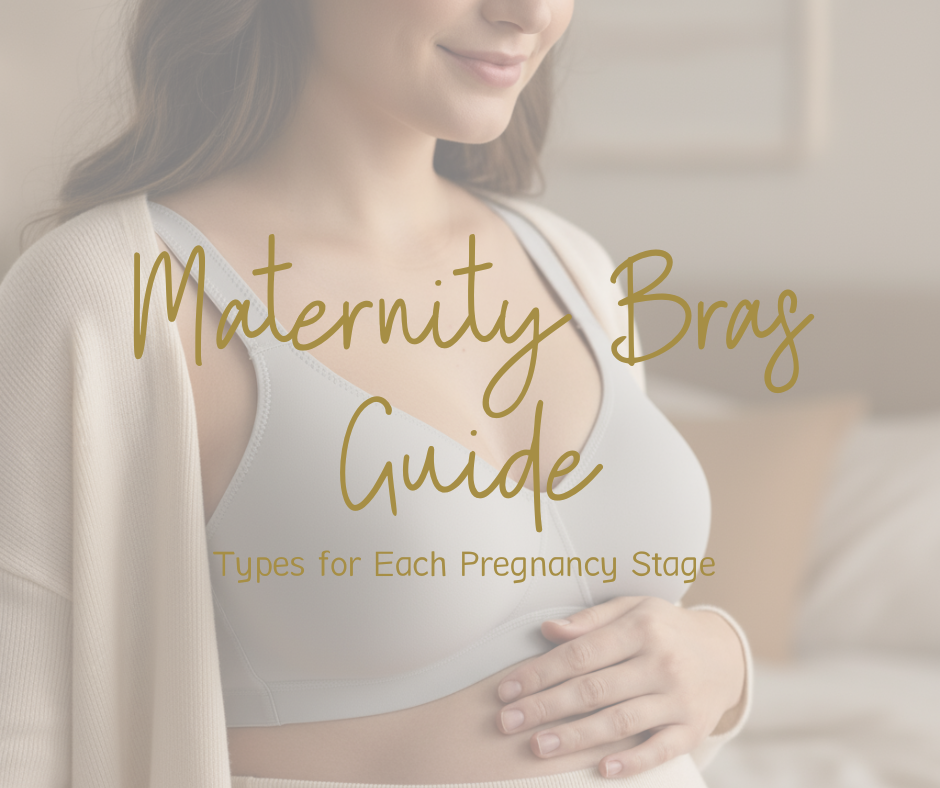
As your body changes during pregnancy, your bra needs change too. This guide explains which styles work best at each stage, with simple tips for comfort, fit, and support.
Why does the right maternity bra matter during pregnancy?
Answer: The right bra supports breast growth, protects sensitive tissue, and improves day-to-day comfort without restricting movement or blood flow.
Maternity bras are designed to adapt as your size changes. Look for soft fabrics, gentle stretch, and adjustable features that grow with you.
What should I wear in early pregnancy (weeks 1 to 13)?
Summary: Prioritise comfort and flexibility while sensitivity is highest.
Key features
- Soft, stretchy fabrics that accommodate rapid change
- Wire-free or flexible underwire for gentle support
- Adjustable straps and multi-way backs for a better fit
- Seam-free cups to minimise irritation
- Light, breathable materials for all-day wear
Most people move up one to two cup sizes in the first trimester. If your current bras feel tight, switch early to avoid discomfort.
What works best in the second trimester (weeks 14 to 26)?
Summary: Move to styles with more structure and capacity as size and weight increase.
Key features
- Roomier cups with supportive shaping
- Wider straps for even weight distribution
- Side support panels to lift and centre
- Moisture-wicking liners for everyday comfort
- Multiple hook-and-eye settings for band flexibility
It is common to size up again during this period. Refresh your fit every six to eight weeks so your bras stay supportive.
What should I look for in the third trimester (weeks 27 to 40)?
Summary: Maximise comfort and support, and prepare for nursing if you plan to breastfeed.
Key features
- Secure bands with comfortable stretch
- Encapsulating cups that support each breast individually
- Lightweight, breathable fabrics
- Extended size ranges
- Easy-fastening backs for quick adjustment
This is a good time to choose nursing styles so you are ready for the early postpartum weeks. For step-by-step sizing, use our maternity bra fitting guide.
.png?lud=20220210155100)
How do nursing and postpartum bras help after birth?
Summary: They give quick access for feeding and stable support when milk supply fluctuates.
Key features
- One-handed clip-down or pull-aside cups
- Supportive, full-coverage designs for heavier breasts
- Optional leak-resistant linings
- Easy adjustment as size changes day to day
- Fast-drying, wash-friendly fabrics
Size can increase again when milk comes in during the first week. Many people feel most comfortable starting with their late-pregnancy size. Explore our nursing bras for everyday options.
How much size change is typical during pregnancy?
- Pre-pregnancy to first trimester: usually up to one cup size
- Second trimester: often a further one to two cup sizes
- Third trimester: size may stabilise or increase slightly
- Band size: can rise one to two sizes as the ribcage expands
- Postpartum: a further increase is common when milk arrives
These changes are temporary and individual. Well-fitted bras protect comfort and posture while your body adapts.
When should I buy new maternity bras?
Answer: Check your fit every six to eight weeks and replace when bands or cups feel tight or unsupportive.
Choose breathable, good-quality fabrics and keep a mix of styles for different needs, such as soft lounge bras for rest and more structured options for daily wear.
What are the best next steps to find your fit?
For a full overview of pregnancy-friendly lingerie, explore our maternity bras collection which brings together every style in one place. If you need extra stability during daily wear, try our maternity support bras designed to ease pressure on the back and shoulders. Preparing for the fourth trimester? Visit our postpartum lingerie guide for comfort-focused solutions that adapt with you.